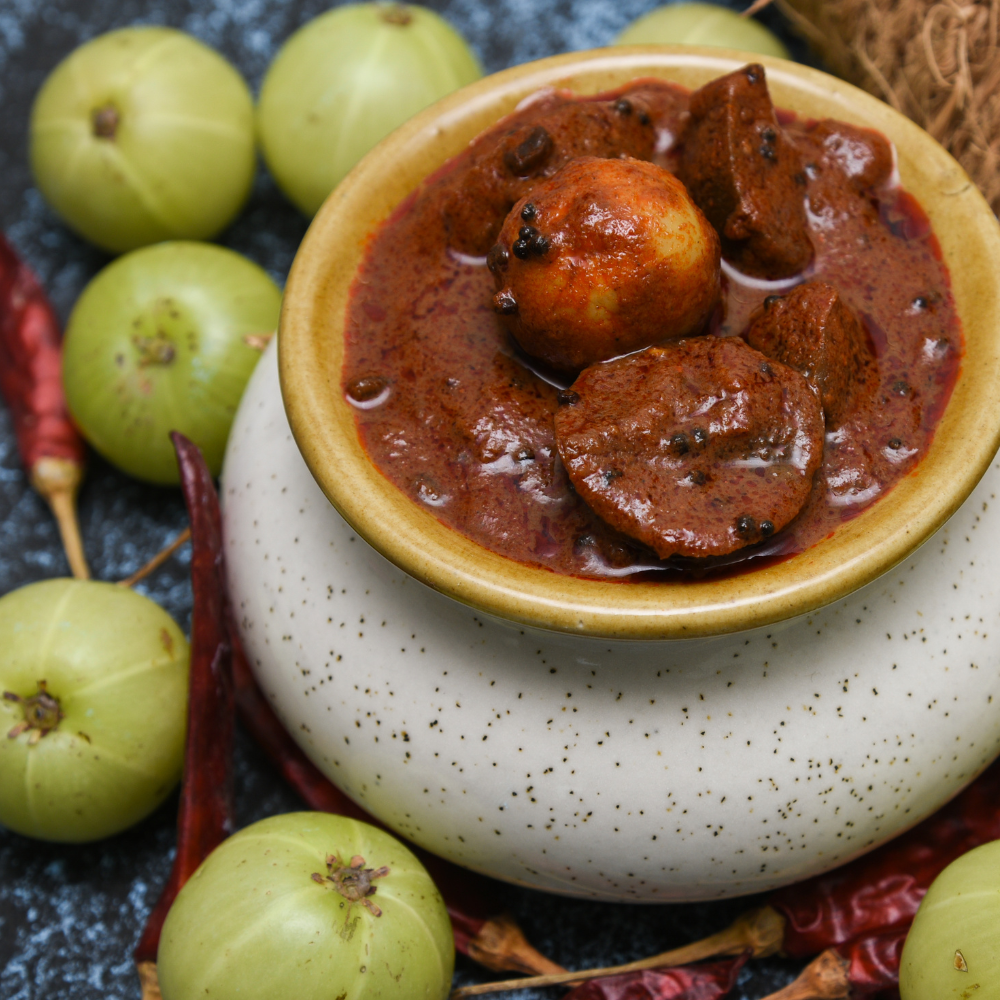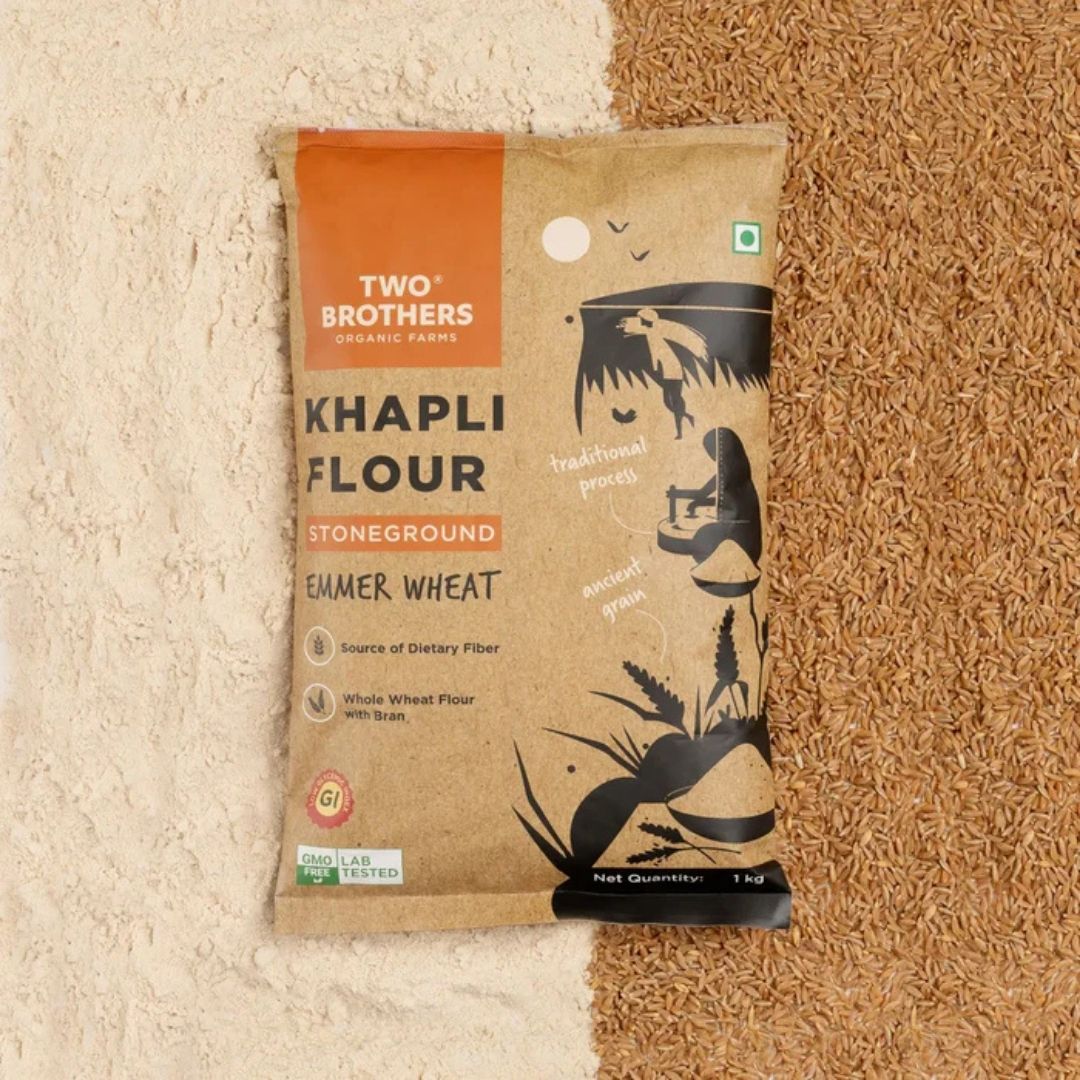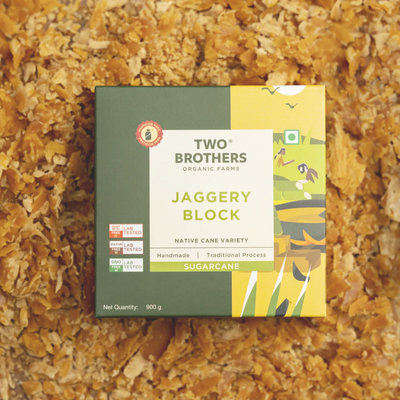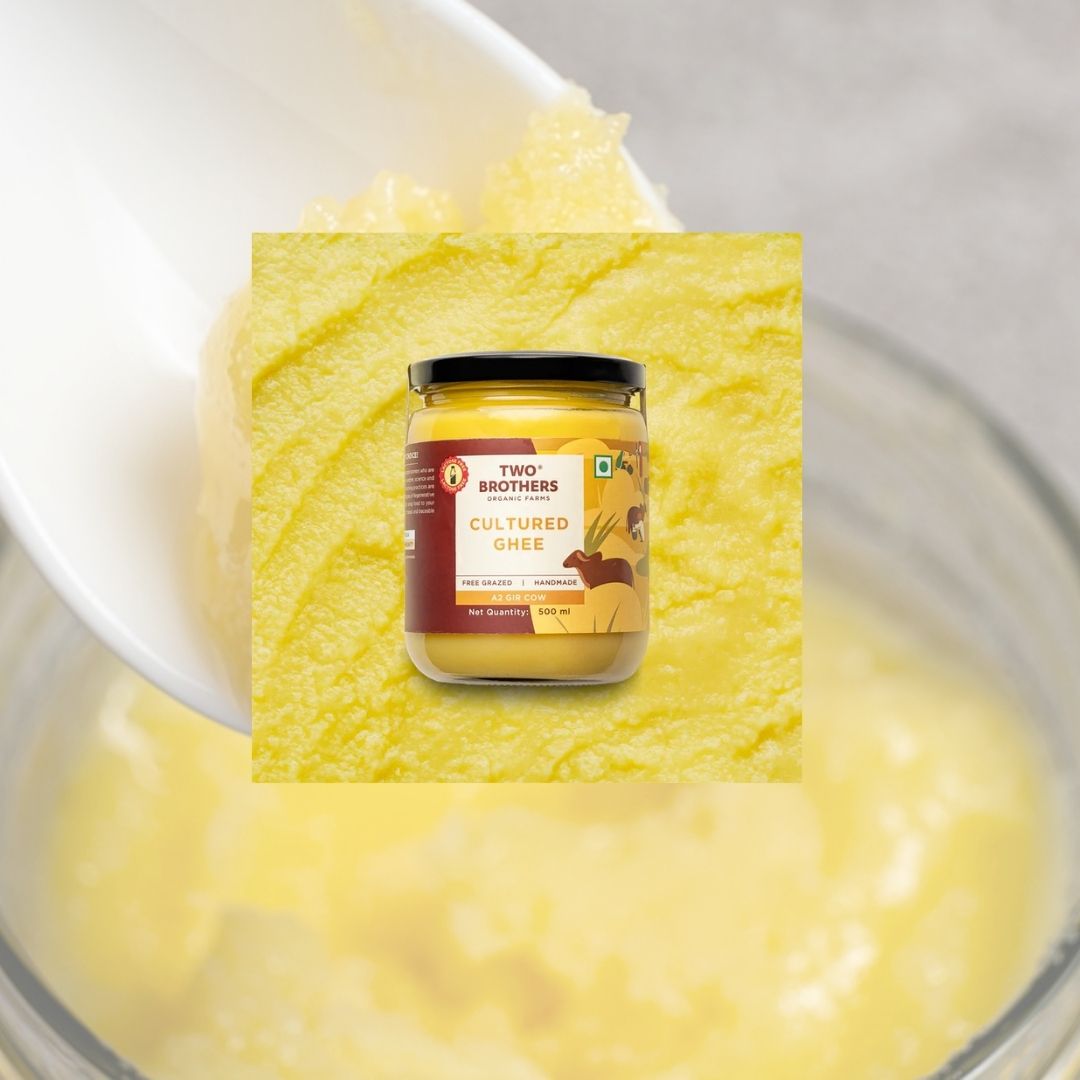Are you trying to find a condiment that tastes amazing, is high in nutrients, keeps you looking youthful and beautiful, and also fights disease?
That's correct—all these benefits stem from a single condiment called "Amla Pickle or Indian Gooseberry Pickle."
Indian traditional medicine has long included amla. The amla plant has various therapeutic uses for every component of it. By offering amla in a variety of entertaining forms, such as amla murabba, chyawanprash, amlaprash, or amla pickle, our ancestors made sure that everyone benefited from it.
Pickles are loved by all, but it's difficult to determine which amla pickle recipe is the best. While some people like their amla raw, others would rather cook, steam, or boil it to make pickles.
Come learn two of the most well-liked and unique methods for preparing amla pickle. You'll also discover the ten incredible health advantages of amla.
Okay, let's get going!

Now, everyone loves their pickles. It’s difficult to say which is the best-tasting amla achar recipe. Some love amla as it is, while others like to cook, steam, or boil them to make amla ka achar.
Why don’t you join us to find out the two most popular and different ways of making amla achar or gooseberry pickle? Later, you can also learn about the 10 amazing health benefits of amla.
Alright, let’s begin!
|
Table of Contents
|
Amla Pickle Recipe or Gooseberry Pickle Recipe
The fruit of the amla plant is used to make amla pickle. It is spherical, juicy, and has a greenish-yellow hue. Indian gooseberry, or amla fruit, has an aftertaste that is astringent and has a sour, bitter, and somewhat sweet flavor. It's too acidic for many people, but for others, it's delightful.
Recipe 1: Traditional Amla Pickle Recipe
Anyone can make this recipe for amla pickles because it is so simple. With a little perseverance and high-quality amla, you may have delectable homemade amla pickle in three to four days.
Ingredients for Amla Pickle Recipe
-
500 grams of Amla
-
200 grams of mustard oil
-
3 to 4 pinches Asafetida
-
1 tsp Fenugreek seeds
-
50 gm salt
-
2 tsp powdered turmeric
-
1 tsp red chili powder
-
3 tsp coarsely chopped yellow mustard seeds
-
2 tsp powdered fennel seed
How to Prepare Amla Pickle
-
Use fresh water to wash the amla.
-
Bring a pot of 500 ml water to a boil. Add the amla once the water reaches a boil.
-
After the amla has boiled for three to four minutes, remove from the fire.
-
After the amla cools, cover the pot.
-
Take the amla out of the water and let it air dry.
-
Remove the seeds and chop the amla into small pieces.
-
In a frying pan, heat 100 ml of oil. Add the fenugreek and asafoetida seeds, and let them sizzle.
-
Fill the pan with red chili powder, turmeric powder, fennel seed powder, yellow mustard seeds, and salt.
-
Include the chopped amla in the skillet and thoroughly combine with the spices.
-
Pour the mixture into a glass container that is dry.
-
Cover the pickle with the leftover oil and give it a good shake.
-
Allow it to pickle properly for three to four days, stirring every day with a dry, clean spoon.
That's it; the amla pickle is ready!
From Nisha Madhulika's recipe
Although you can eat it on the first day, the flavors are enhanced if you wait three to four days. Amla Pickle can easily last a year or longer if preserved correctly.
Let us now examine the second recipe that does not require boiling the amla.
Recipe 2: Boil-Free Amla Pickle Recipe
This is a simple and quick dish. The process of preparing and cooking amla with spices takes only thirty minutes, while pickling takes two to three days.
Ingredients for Boil-Free Amla Pickle Recipe
-
150 grams of amla
-
Oil, either sesame or mustard, to fry amla.
-
1 tablespoon salt
-
3–4 teaspoons red chili powder
-
2 teaspoons mustard seeds
-
One teaspoon of fenugreek seeds
-
½ teaspoon ground turmeric
-
Two or three garlic cloves
-
One big lemon
How to Prepare Amla Pickle Without Heating Up
-
Rinse the amla in cold water and pat dry.
-
Chop the amla into little pieces or make a few tiny slashes around them.
-
Pulverize the fenugreek and mustard seeds into a fine powder.
-
Fry the amla in the oil until they turn a light golden color and are partially cooked.
-
Stir in the minced garlic and turn off the heat.
-
Toss in the amla mixture along with the red chili powder, turmeric, and salt.
-
Squeeze in the lemon juice and stir once the mixture reaches room temperature.
-
Use your taste buds to adjust the salt, chile, or lemon.
-
Before eating, transfer the mixture to a dry, clean jar and let it sit for two to three days.
It's time to serve the amla pickle.
Source of Recipe: Swasthi's Recipe
Healthy food is frequently purchased and then left unfinished. This shouldn't occur with amla pickle, of all meals. See these ten advantages of amla for your health and feel inspired to incorporate it into your regular diet.
10 Incredible Advantages of Amla Consumption Every Day
There are many more advantages to eating amla than simply ten. Experts in Ayurvedic, Japanese, Chinese, and European medicine support Amla's benefits. Without further ado, let's find out more about them.
Amla possesses antiviral, antifungal, and antibacterial properties.
Amla's strong vitamin C and antioxidant content aid in the battle against viral, bacterial, and fungal illnesses. According to studies conducted at the Niwa Institute of Immunology in Japan, amla is an effective free radical scavenger.
Amla treats spots and boils.
Crushed amla skin is combined with ghee and applied to boils and zits to speed up the drying process.
Amla relieves indigestion, diarrhea, and constipation.
For a long time, people have utilized amla's astringent qualities as a laxative to treat constipation and to assist regulate bowel motions.
Amla is beneficial to oral health.
Amla has long been a component in tooth care products.
It is really good for our teeth because of its antimicrobial qualities.
Amla is beneficial for diabetics.
Ellagic acid, a kind of polyphenol found in amla, aids in blood sugar regulation. Patients with diabetes are generally advised to consume amla on a daily basis.
The fruit amla is an aphrodisiac and aids in infertility.
Amla's high concentrations of vitamin C, zinc, iron, and polyphenols aid with men's infertility and enhance mood, energy, and sexual health.
Amla reduces fever, nausea, nosebleeds, respiratory problems, and other symptoms.
Amla is a common ingredient in many remedies for fever, nausea, nosebleeds, and other ailments such as urinary and vaginal infections.
Amla promotes healthy skin and hair.
Amla's antioxidants and vitamin C help prevent hair loss, fight aging symptoms, brighten hair, and get rid of dark spots and blemishes. Amla is suggested by physicians and dietitians for various problems.
Amla enhances cognition and maintains heart health.
Polyphenols with anti-inflammatory and cardioprotective properties are abundant in amla. It has ingredients that have been connected to neuroprotective actions, which support the preservation of brain tissue in diseases like dementia and Alzheimer's.
Amla is applied to cancer patients.
Amla contains polyphenols, which have anti-cancer qualities and can be helpful in cancer treatments.
FAQs:
What occurs if we consume amla every day?
About 300 mg of vitamin C, dietary fiber, calcium, iron, and antioxidants such as polyphenols, alkaloids, and flavonoids can be found in a serving of 100 grams of amla. Regular use of amla boosts immunity, lowers the risk of heart disease and age-related macular degeneration, and enhances vision because it contains vitamin A.
How can I consume amla to improve my health?
Raw, pickled, powdered, candied, chyawanprash, or as amla murabba are all possible ways to eat amla. It can be eaten as pickles and chutney, or as a raw drink with jaggery.
Does the body generate heat from amla?
Amla helps control body temperature and provides a cooling effect.
Conclusion
With this knowledge and the ideal amla pickle recipe, maybe you will be able to prepare this delectable relish at home. The dishes are simple to make and don't call for a lot of ingredients. Include amla pickle in your regular diet to reap its benefits for strong bones, healthy hair, skin, and brain function.
To get started, all you need is some organic amla of the highest caliber. But don't panic if you can't locate them. In the off-season, Amla Pickle is still enjoyable.
Sample the Two Brothers Organic Farms Spicy Amla Pickle, which is created utilizing the ancient lacto-fermentation process with farm-fresh amlas and hand-pounded spices. Small batches of these pickles are produced without the use of artificial coloring, binders, or preservatives.










